HomeFest: the performance festival that is created and held in domestic spaces, is now in its 4th year in 2017, and took place between the 20 and the 28th of October during a season when Bucharest felt like the pleasure-keeper of fresh art and culture. HomeFest is the descendant of the campaign Se joacă cu casă deschisă and the offspring of the living-theatre lorgean signed by homemade culture association. Jean Lorin Sterian is the one who carried on this legacy, gathering diverse performative acts in domestic spaces. He is a researcher, writer, artist and performer. He started lorgean theater in 2008 in Bucharest when he turned his home in a public space of spectacle and conceived of the term homemade culture. Other small truths about Lorin can be found in this interview by Marina Albu in Revista ARTA.
In order to get a spot in a living room, one has to email the host and ask for a booking. The entry fee is a book to be given at the entrance of the house, a few minutes before the show begins. The threshold is marked with a rug that says “happy you made it”. The website with the entire program was a permanently opened tab to a few faces that were present for most of the events. Otherwise, the public was diversified by curatorial choices which brought shows from various fields. The following text is the unfolded scenery of a festival that happened in 15 houses in a warm, crowded Bucharest. Writer’s disclaimer: the only two events I did not attend as a spectator are Omnidisplacement, a lecture I held myself, and the very colorful, education and energetic performance The Syndicate – Phoenix And Vanessa – The Syndicate for Lifting up The Civil Rights Fighting Spirit in Every Citizen.
October 20th. Once the audience reached Lorin’s living room, the birthplace of homemade culture as a term and practice, felt almost like a studio visit. Lea Razovszky’s Fraierul interior (The Inner Sucker) performative lecture grew soon into a confession on the vulnerability behind the humorous practice of such a relentless visual artist. The lecture grew into a studio visit due to Lea’s straightforward and unbroken discourse on the challenges of her kind of all one’s got type of practice. Lea presents the joy and process of drawing as most important, but at the core of her lecture is the birth of a character through the usage of her left hand. The Inner Sucker, as revealed by the artist, is a character that reiterates humongous canons of beauty – to be found in the albums Wimp and Flirt on her Facebook profile. Lea split the projection surface into tiny canvases and invited everyone in Lorin’s nest to draw with their left-hand.
October 21st. Saturday afternoon started on the lexical field of memories with Berlin-based performance artist Johanna Gilje. Johanna can often be found in Raumstrategien, Weißensee Kunsthochschule and Grüntaler9 independent space in Wedding, Berlin. She uses different mediums: dance, publishing, and object-ducks, to explore sources of meaning and memory in different kinds of entanglements. Johanna plays around with research as performance and performance as research. exerciții de memorare a amintirii (exercises to remember memory) is one of them, renamed and remade site specific for HomeFest. Behind Cișmigiu Park, in a bathtub and on a balcony, Johanna invited her audience one by one to a general reform of stored memories: she asked the participants to either drop a stone or float a flower in the bathtub where she was underwater, for memories they wanted to either remember or forget. You could hear the noise of the park in the house; the soundscape of the balcony was recorded before the audience came, and was then played throughout the performance. The exercise of reflection on remembrance under this year’s last rays of sun ended in silence and green tea. The intensity of the meaning in this indirect confession obstructed any dialog between Johanna and the visitors, until regathering for fast food next door.
This evening of the same day found a notable crowd impatiently socializing in front of a block of flats from the 80’s. The host smoothly ushers us into a warm living room, serves tiny waterfalls of wine and lets us occupy the space with zero constraints. Against the background of a bookcase topped up with history books, cartoons and coloring books at the bottom, a soprano sings Hozier – Take Me To Church. Mădălina Antal, now a director at the Children’s Comic Opera in Bucharest, is using her expertise as a classical opera singer to give the audience an ABC’s lesson on the intertwined preconceptions of both opera specialists and its audiences. The humor mediates her mild message: the joy of singing is above any constraints and achievements. After, the mild spirit of joyous singing is maintained in this apartment by a very fresh cover band – Spectrum. Two girls are echoing the moods of the two main characters in the graphic novel inspired movie Ghost World, and sing Röyksopp and talking about old school psychedelic rock. The self conscious rhythmic banter between the analog playlist of these two musicians keeps a magical intimacy in a living room with almost 50 socks in sight.
October 22nd. An unfurnished home with drapes in the windows and black juice in plastic cups at the entrance, hosts a unique happening that Sunday. A projection reveals a video documentation of an exhibition about a fictitious future. One futuristic display accommodates a glass fish and an old house telephone with the ideal captions. The set-up challenges our interpretations of very domestic objects presented as found by future inhabitants of the Bucharest we know now. It is a sample of 3017 – an experimental museum of the future put together from the web documentary series Bucharest Housing Stories. The initial show was presented at MATER space, illustrating furture discoveries of diverse types of living from present times: blocks of flats, hostels, compounds, ghettos and streets in the periurban area as shown for museum visitors of 3017. The audience was invited to respond with an object that they wanted to conserve for the future. The conversational effect of such an attempt was a profound reflection on the everyday objects we could now perceive as archeology’s treasures.
The Museum of Housing is an image theatre piece created by Andrei Șerban, Gabriela Teodorescu and a few courageous women from the Rahova-Uranus and Vulturilor 50, famous streets for scandalous house restitution stories, who put together real life-scenes from the period 2006-2016. That was the second museum of the evening, and indirectly it had something in common with the first one. It spoke about the past for the future. The attempt of bringing biographies into a public space is a necessity when debating subjects that, even though they are a reality, are inaccessible outside of art. The piece speaks of discrimination, unequal representation, class and the abuse of rooted and institutionalized power that in this case prevents people from claiming their rights. Luckily, at HomeFest, a discussion followed the piece. The audience engaged directly with the actors and their struggle to find post evacuation housing outside of renting by demanding from the state the same basic rights as the new owners.
October 23rd. Storm. Cristina Vidruțiu presented her academic research on the relationship between narratives and illness in a subtle analogy with her brain as a house, above one of the loudest intersection in Bucharest, Blvd. Carol and Calea Moșilor. First she talked about plague in literature, and continued the tour of her mind with the images of disease present in Dino Buzzati’s very diverse work as a writer, journalist and painter. Her last room, where most of the action occurred, was a presentation of the sophisticated and poetic research she completed during her Schloss Solitude Fellowship where she made a series of interviews about disease with artists, patients, doctors, nurses, directors and writers and put it together in an art installation called Narrative Anatomy. This installation is a continuous interdisciplinary research, where Cristina presents her documentation and reflections on the subjects. Beyond knowledge, the room vibrated with compassion, accuracy and giving.
In an empty living room with local bas reliefs in glass, cheap wood, pictures and memories, the writer Ana-Maria Sandu is reading in a meditative position in front of a dusty TV. There are as many books as people in the room tonight – the books which are given as entrance fee and the two books brought by authors to be read from in Piața Norilor: Ana’s first short prose volume The building with 4 floors and Arzee the Dwarf by the novelist Chandrahas Choudhury. Doamna Mola, one of the inhabitants of Ana’s building, was there with us, flowing as if a Wim Wenders movie were made out of words. The walls are thin so hopefully the neighbours are also listening to her stories.
Behind him there is a foldable table and a wall that will soon be a YouTube cinema screen. Through a smile, Chandrahas gives us an introduction to Bombay cinema from the perspective of Arzee, a small and insecure man who works in the cinema. Chandrahas turns the reading regale into a YouTube party. He shows movies from different times of Indian cinema in Bombay and introduces us to delicate and humorous narratives. He shares allegories on political, technological and social aspects, reflected in songs from thunderous moving images.
October 26th. Physics, in a very profound romantic state, was interpreted several times by Ioana Barbu and Marin Grigore. Constellations is a contemporary play written by the British screenwriter Nick Payne about the infinite possibilities within a love affair between a physicist and a beekeeper. The play centers on the value of free will and, at the same time, the way it is staged allows infinite points of view on the reactions of two characters to be shown through only two characters. The warmth of the room encapsulated the force of time and the possibilities of all imagined cosmic strings the two actors sweated for. Arms around waists, companionship was a theme in the crowd.
October 26th & 27th. The entrance to The Agency of Touch is a painter’s moodboard. He is at work and whispers so Mădălina Dan can continue her compositions. “Is there anything I need to know about your body?” is the first procedure of the agent. The agency is both a state and an institution that brings together the tactile diversity one encounters throughout existence. The re-appropriated moves build imaginary sculptures above very diverse bodies throughout two days of encounters. The sound digs in the air in the room. The piece was especially composed for this performance by Natalia Bustamante and was created at HZT (Hochschulübergreifendes Zentrum Tanz Berlin). Mădălina surely holds the elegance of a channeler, one that bridges everyday life with contemporary dance.
October 27th. A wide balcony hosts a complete view of another central lively Bucharest intersection, sparkled with inter-war nostalgia and glittery midnight activity. Tea and cookies are served in English. People float in a dark blue atmosphere where the only light comes from the stage-room, where two performers are mopping a wooden floor. Later the audience gossips about the meaning and the process through which women are making technologically mediated traces as contemporary art. We find out that the sharp loop is a reinterpretation of a song by the band Sugarbabes. The technology that maps and displays the short term water traces of the ladies mopping is an open-source program designed this time to draw attention to invisible labour. SPAȚII VII (Alive spaces) is signed by Dilmana Yordanova and Mihaela Kavdanska, and for HomeFest, is hosted in the home of a company – an office.
October 28th. A glossy building entrance becomes the gate to a few hours of bodies bouncing between recreation and madness. Fragile has no end and no beginning once you enter the space where the performance is staged. Plenty of belongings, later to become the show’s props, are parked in a warm peachy light. A very diverse bunch of bodies are lingering between patience and confusion in a welcoming condo. The only time-frame is the length of a few lovely tracks that the audience was asked to send as preparation for this customized edition of the show. Dance was a language, a language for a performance framed in an emotional-exorcism exercise that resembled a contemporary dance workshop. Opinions, physical interactions, position adjustments and debates creating confusing emotions built together a set of actions, that until the very end of the show are instruments of the performers and authors Giselda Ranieri, Tanja Andreeva and Cosmin Manolescu. Most of the participants choose a premature ending when they were asked to be daring. Only a few stayed and confronted a primordial attempt to dissolve the famous boundary between performance and a so called “off-stage” reality.
After a whole week of greetings in front of houses and staircases, I felt like HomeFest should be a practice and not a festival; that house parties and gatherings between people from the same guild should be a constant cultural transfer; that people should squat each other’s houses in an attempt to change and exchange their performative expressions and to unite not only in feast, but in labour. HomeFest succeeds as a rehabilitation of interiors, both of people’s mentations and people’s homes through diverse cultural happenings which clearly reflect a fragmented recent past.
HomeFest was in Bucharest between 20-28 October 2017.
POSTED BY
Jasmina Al-Qaisi
Jasmina Al-Qaisi (b. 1991) is a visual ethnographer and a cultural correspondent. She lives in Berlin and works in the archive of the art and project space Savvy Contemporary....
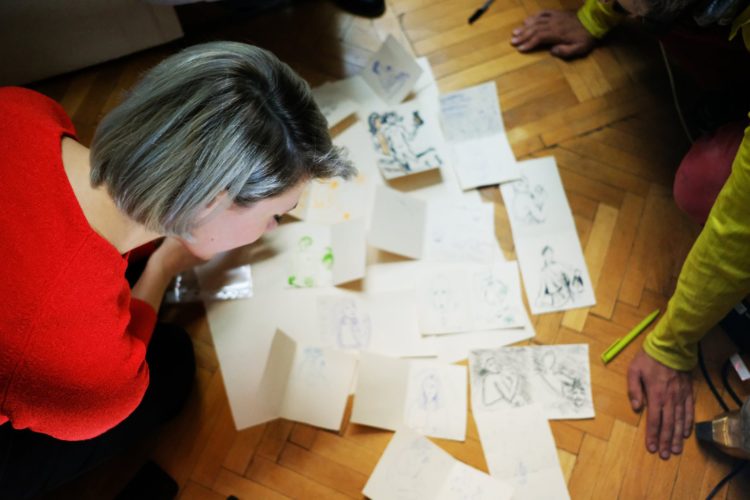
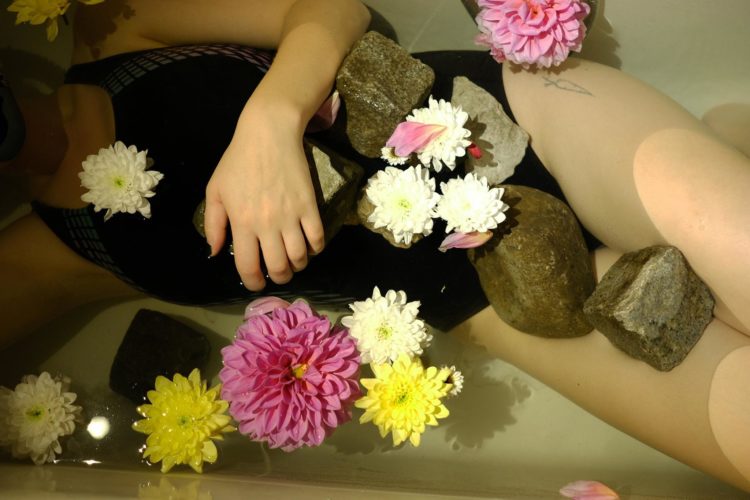
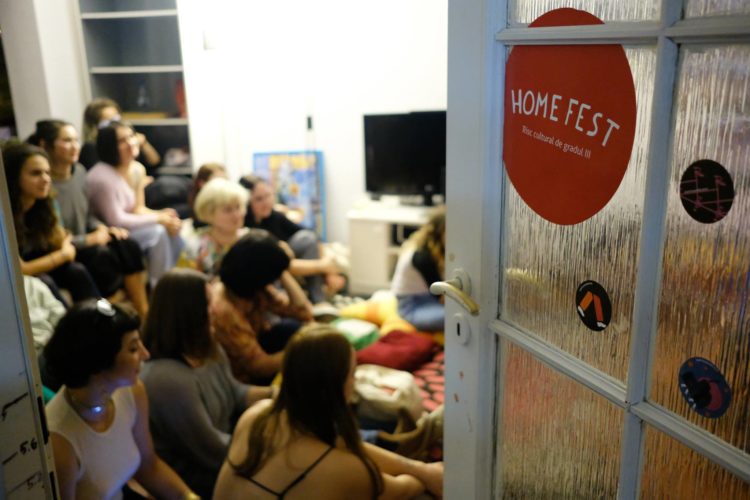

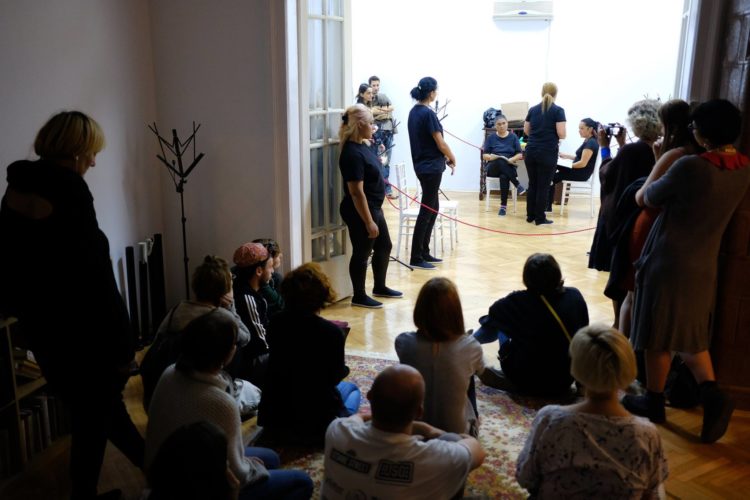
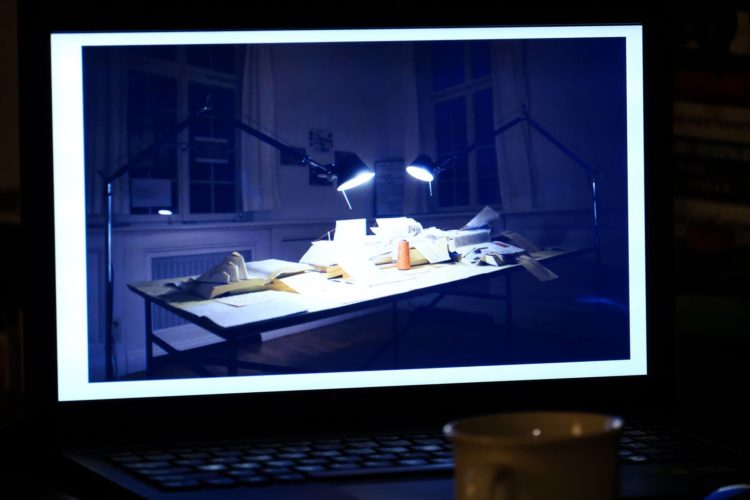
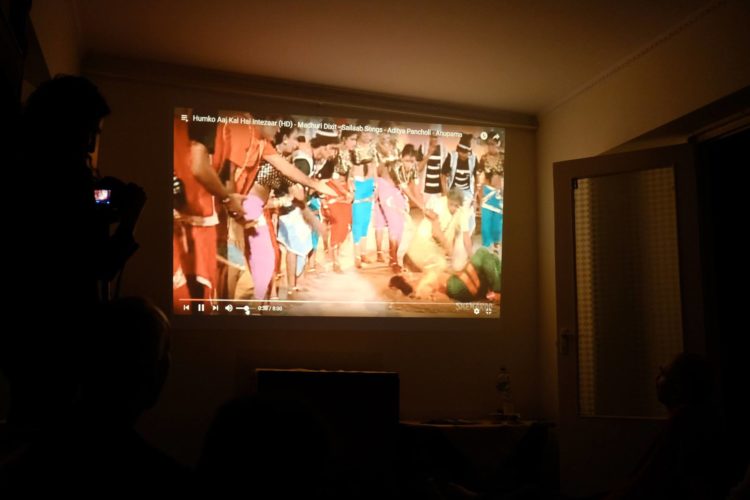
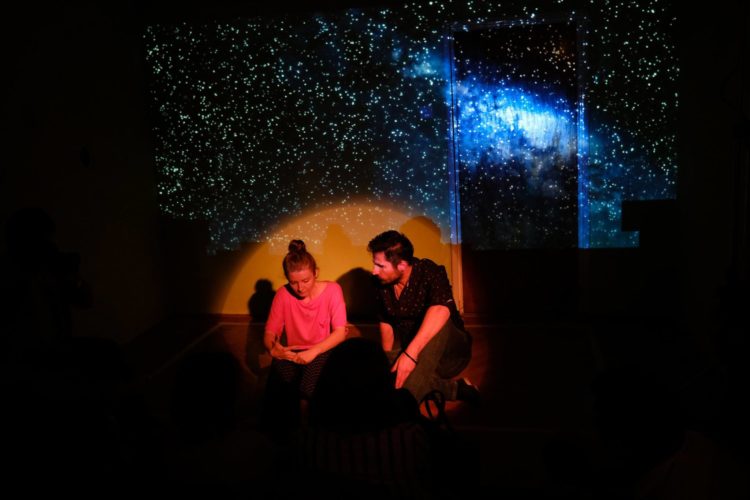
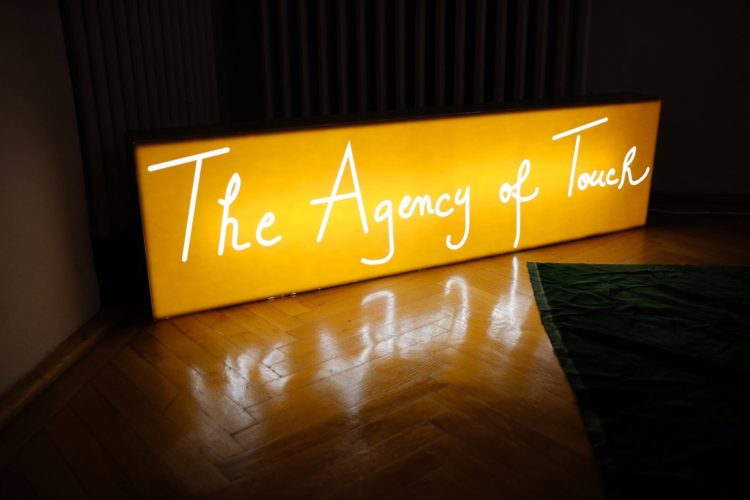

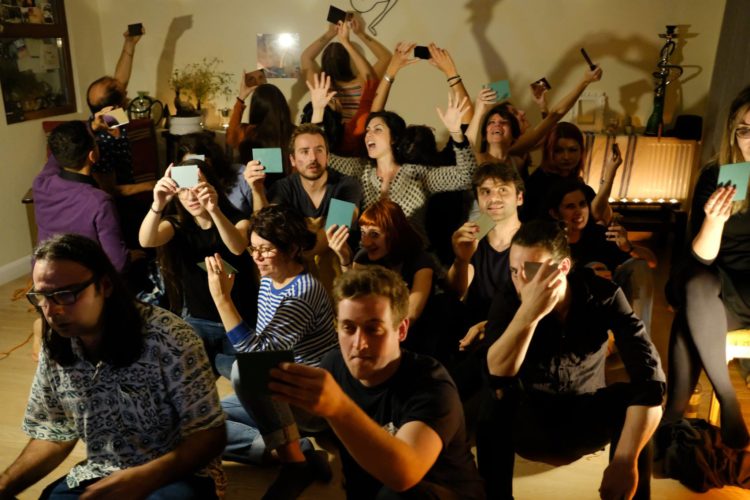
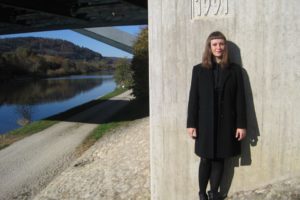
Comments are closed here.